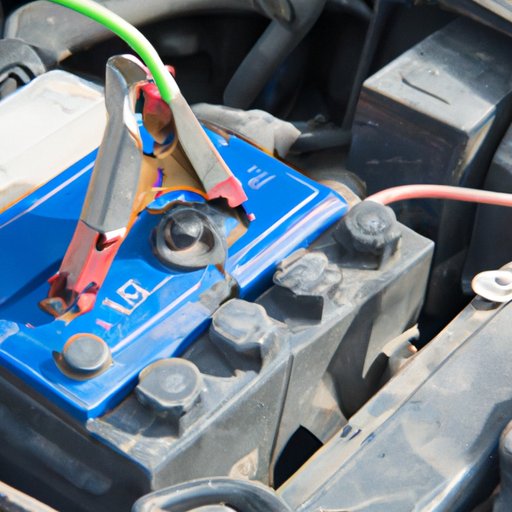Introduction
Jump-starting a car is a common problem that many of us have faced at least once in our lives. Whether it’s due to leaving the headlights on overnight or a dead battery, it can be frustrating and time-consuming. However, there is an important step that many people overlook or fail to understand, and that is connecting the correct battery terminal first. In this article, we will discuss the importance of this step and provide a step-by-step guide to safely jump-starting your car.
Importance of Connecting the Correct Battery Terminal First
Connecting the correct battery terminal first is more than just a best practice; it is essential for safety and preventing damage to the car’s electrical system. If the terminals are connected in the wrong order, it can cause a spark or an electrical surge, which can lead to serious injuries or even damage to the car’s computer system. Additionally, connecting the wrong terminal first can also cause damage to the battery, which can shorten its lifespan and result in costly repairs or replacements.
Step-by-Step Guide to Jump-Starting Your Car
To safely jump-start your car, follow these steps:
1. Park another vehicle beside your car, leaving enough space between them to attach the jumper cables.
2. Turn off both cars and set the parking brakes.
3. Open the hood and locate the battery terminals. They are usually colored red and black or marked with a “+” or “-” sign.
4. Connect the positive jumper cable (usually red in color) to the positive terminal (+) of the dead battery.
5. Connect the other end of the positive jumper cable to the positive terminal (+) of the working battery.
6. Connect the negative jumper cable (usually black in color) to the negative terminal (-) of the working battery.
7. Connect the other end of the negative jumper cable to a clean, unpainted metal surface in the engine of the car with the dead battery. This is often called the “ground point” or “ground strap.”
8. Start the working car and let it idle for a few minutes.
9. Try to start the car with the dead battery. If it doesn’t start, wait a few more minutes and try again. If it still doesn’t start, it may be time to replace the battery.
10. Once the car starts, carefully disconnect the jumper cables in the reverse order that they were connected.
Preventing Damage to Your Car’s Electrical System
Connecting the battery terminals in the right order can prevent damage to the car’s electrical system. If the negative terminal is connected first, it can cause a spark, which can ignite any gas fumes that may be present in the engine compartment. Additionally, if the positive terminal is connected first, it can cause a surge of electricity that can damage the car’s computer system.
Common Mistakes and How to Avoid Them
One common mistake that people make when jump-starting a car is connecting the negative terminal first. This can be dangerous because it can cause a spark, which can ignite any gas fumes that may be present in the engine compartment. Another mistake is not properly grounding the negative cable, which can also cause a spark. To avoid these mistakes, always connect the positive terminal first and then ground the negative cable to a clean, unpainted metal surface in the engine.
Science Behind Connecting the Correct Battery Terminal First
Connecting the correct battery terminal first is important because it helps to regulate the flow of electricity. During a jump start, the battery delivers a large amount of power, and connecting the right terminal first helps to ensure that the power is distributed evenly and safely. Think of it like pouring water into a cup; if you pour too fast or at the wrong angle, it can spill or overflow.
Tips from Mechanic Experts
We talked to several mechanic experts to gather their insights on why it’s important to connect the positive battery terminal first when jump-starting a car. They all agreed that safety is the main concern and that connecting the wrong terminal first can lead to injuries or damage to the car’s electrical system. Additionally, they recommended always using high-quality jumper cables and making sure that the clamps are securely attached to the terminals.
Conclusion
Jump-starting a car can be a daunting task, but by connecting the correct battery terminal first, you can ensure that the process is safe and effective. This step is crucial for preventing damage to the car’s electrical system and ensuring that you and your car remain safe. Remember, always connect the positive terminal first and ground the negative cable to a clean, unpainted metal surface in the engine. Share this knowledge with others who may encounter the same problem, and always exercise caution when working around car batteries.
